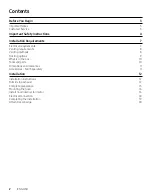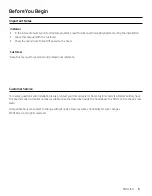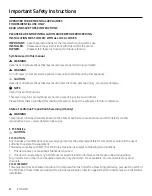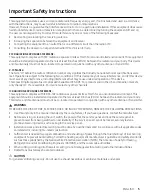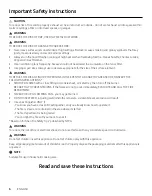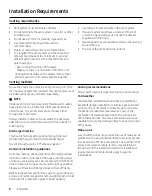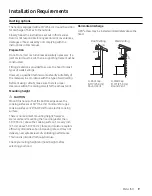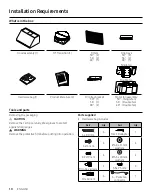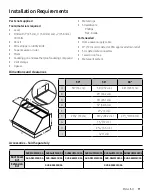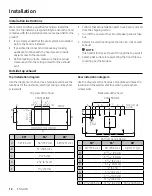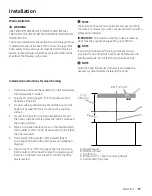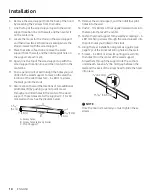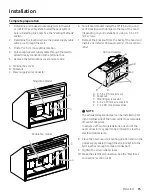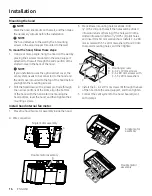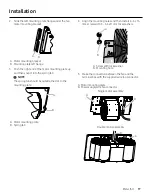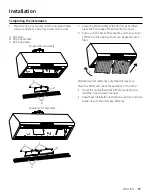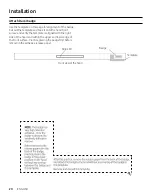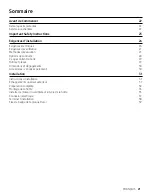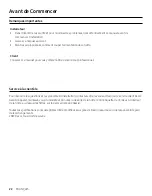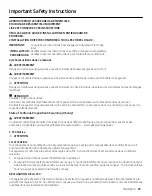
ENGLISH
8
Installation Requirements
Venting requirements
• Vent system must terminate outdoors.
• Do not terminate the vent system in an attic or other
enclosed area.
• Do not use a 4” (10.2 cm) laundry-type wall cap.
• Use metal vent only. Rigid metal vent is
recommended.
• Plastic or metal foil vent is not recommended.
• The length of the vent system and the number of
elbows should be kept to a minimum to provide
efficient performance. For the most efficient and
quiet operation:
-Use no more than three 90° elbows.
-Make sure there is a minimum of 30” (76.2 cm)
of straight vent between the elbows if more than 1
elbow is used. Do not install 2 elbows together.
•
Use clamps to seal all joints in the vent system.
• The vent system must have a damper. If the roof
or wall cap has a damper, do not use the damper
supplied with the hood.
• Use caulking to seal the exterior wall or roof opening
around the cap.
• The size of the vent should be uniform.
Venting methods
To use the hood’s top outlet to vent your hood, a 10” (25.4
cm) round vent system is required. This vent system is not
included and must be purchased separately.
NOTE
Flexible vent is not recommended. Flexible vent creates
back pressure and air turbulence that greatly reduces
performance. The vent system can terminate either
through the roof or wall.
Always install a metal vent cover where the ductwork
exits the house. Hood must be vented to the outside of
building only.
Discharge direction
This hood is factory set for venting through the roof
(vertical discharge) or wall (horizontal discharge).
To vent through a wall, a 90° elbow is needed.
Ductwork installation guidelines
For safety reasons, ducting should vent directly outdoors
(not into an attic, underneath the house, into the garage
or into any enclosed space). Do not exceed 50 ft (15.24 m)
of duct. Keep duct runs as short and straight as possible.
Elbows and transition fittings reduce air flow efficiency.
Back to back elbows and “S” turns give very poor delivery
and are not recommended. A short straight length of duct
at the inlet of a remote fan gives the best delivery.
Ducting recommendations
Proper performance is dependent upon proper ducting.
Cold weather
Cold weather installations should have an additional
backdraft damper installed to minimize backward cold
air flow and a nonmetallic thermal break to minimize
conduction of outside temperatures as part of the
ductwork. The damper should be on the cold air side
of the thermal break. The break should be as close as
possible to where the ducting enters the heated portion
of the house.
Make-up air
Local building codes may require the use of make-up air
systems when using ducted ventilation systems greater
than specified CFM of air movement. The specified CFM
varies from locale to locale. It is the responsibility of
the owner and the installer to determine if additional
requirements and/or standards apply to specific
installations.
Содержание DHD U990C/DA Series
Страница 59: ...ESPA OL 59 Notas...


